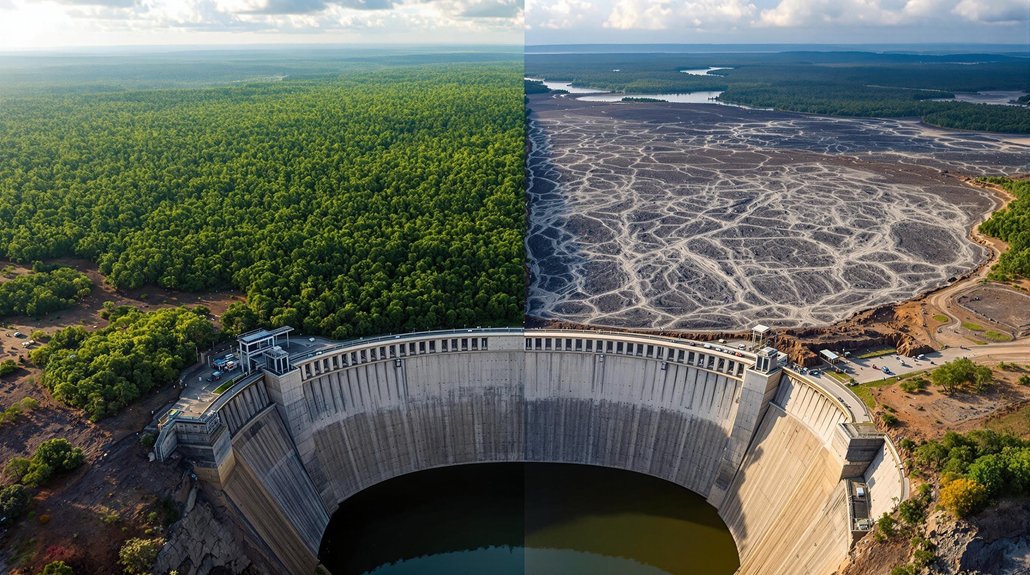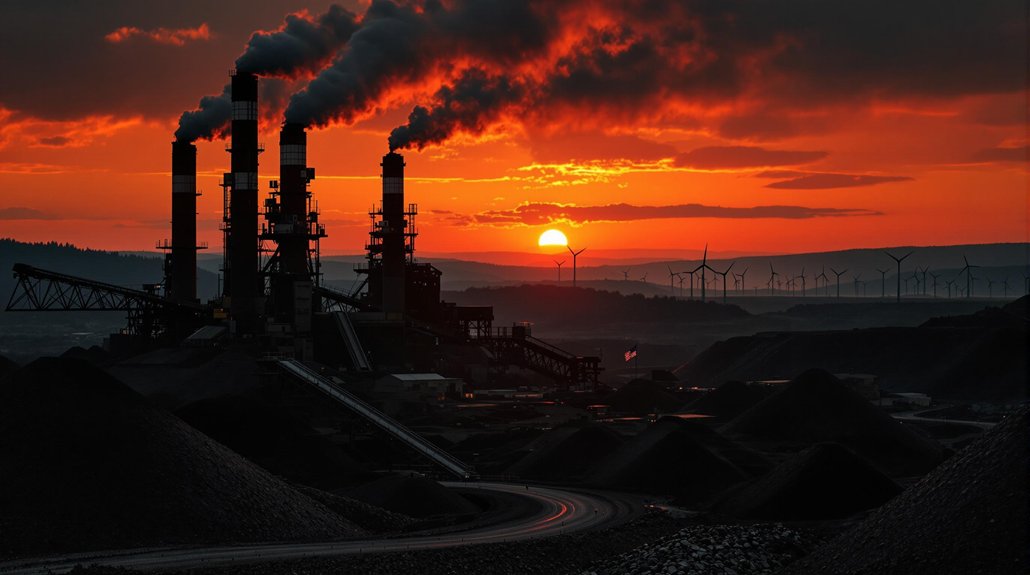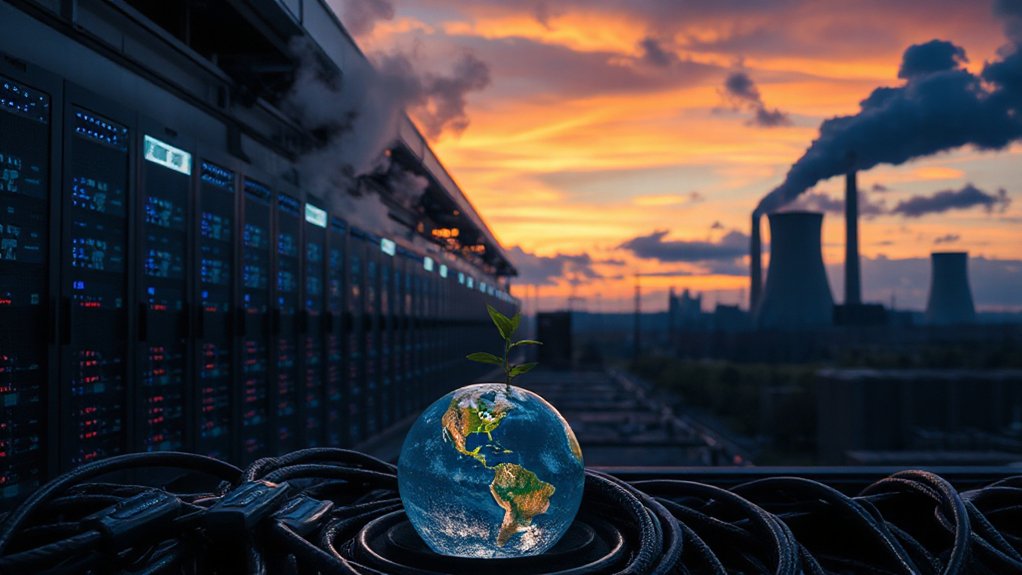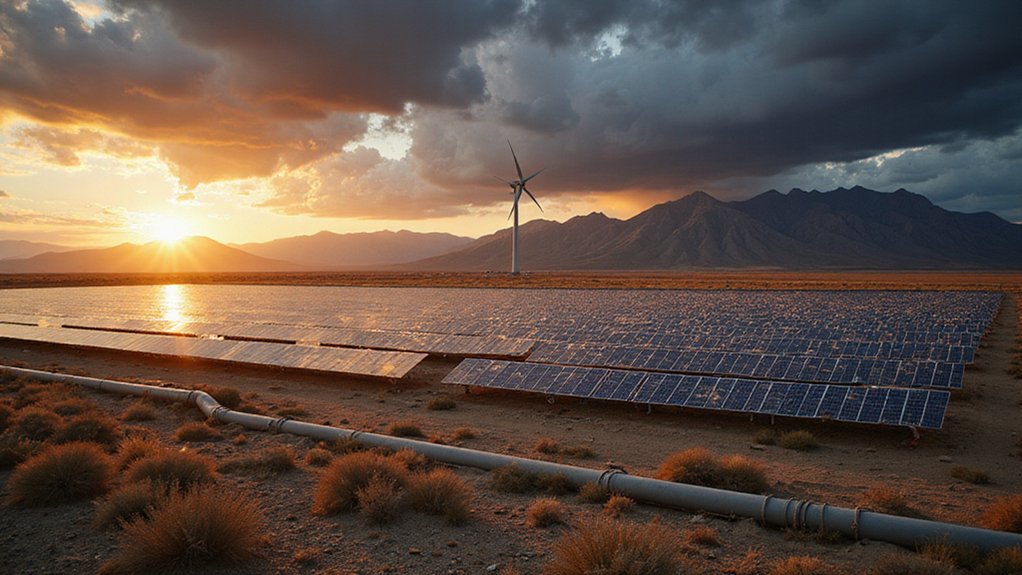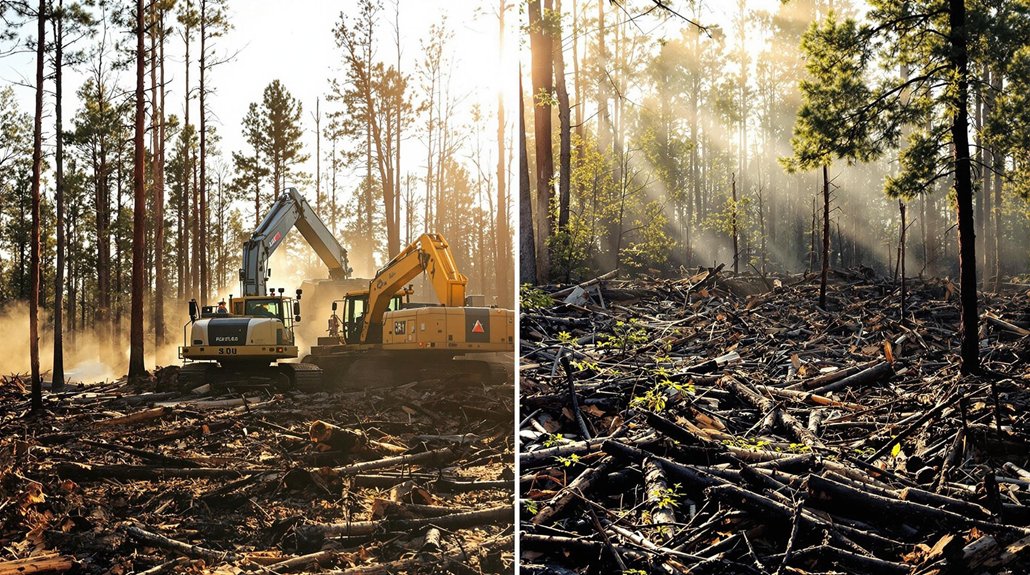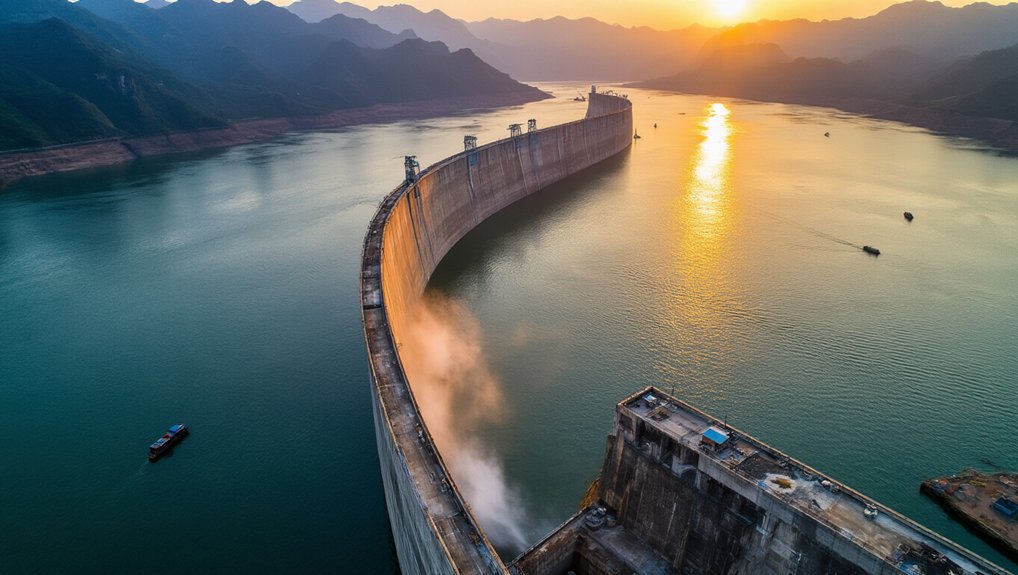Brazil’s relentless deforestation—over 54 million hectares since 2001—is hammering its hydropower industry. Forests regulate rainfall patterns essential for dam operations, but farmers clearing land for cattle and soybeans don’t seem to care. With deforestation rates 48% above the ten-year average, energy companies face diminishing water supplies and operational headaches. Indigenous communities suffer while livestock farming drives 84% of Amazon destruction. The consequences extend far beyond just missing trees.
While world leaders debate climate action in air-conditioned conference rooms, the Amazon rainforest is disappearing at an alarming rate. The numbers are staggering – over 54.2 million hectares lost since 2001. That’s basically France, gone. Poof. And things aren’t slowing down; 2022 saw deforestation rates 48.2% higher than the ten-year average.
Let’s be real about what’s happening. Farmers want more land for soybeans and cattle. Loggers keep cutting illegally. Roads and dams slice through pristine forest. And international buyers? They keep demanding more stuff that requires more trees to disappear. Classic supply and demand – except the supply is irreplaceable.
The Bolsonaro years were a disaster for the Amazon. Four years, 45,586 square kilometers lost. That’s like losing a forest the size of Denmark during one presidential term. Good job, team.
Environmental catastrophe with a side of political negligence. Four years, one Denmark-sized forest, gone forever.
But here’s where it gets interesting – and expensive. Brazil relies heavily on hydropower for its electricity. Those massive dams need water. Forests guarantee reliable rainfall patterns. No forests? Rain patterns change. Less predictable water flow means less reliable power generation.
It’s like Brazil is draining its own bank account. Energy companies are already feeling the pinch as operational capacity declines. Water scarcity directly impacts their bottom line. Turns out you can’t run hydropower plants on hopes and prayers.
The Amazon state saw a 13.1% deforestation increase in just one year. At this rate, projections suggest another 23.7 million hectares could vanish by 2025. That’s not just trees – it’s biodiversity, carbon storage, and climatic stability. Mining operations have devastated vast areas and caused severe ecosystem disruption throughout the region. Livestock farming alone accounts for 84% of deforestation in the Amazon during the first two decades of this century.
Meanwhile, indigenous communities get pushed off their lands. Global warming accelerates. Forest fires increase. And the Amazon’s ability to act as a carbon sink diminishes daily. The deforestation threatens tropical intact forests that are already experiencing a 31% decrease in carbon capture capability.
The irony is painful. In trying to develop its economy through agriculture and infrastructure, Brazil is undermining the natural systems that power its energy grid. Seems like a bad trade-off, doesn’t it?
